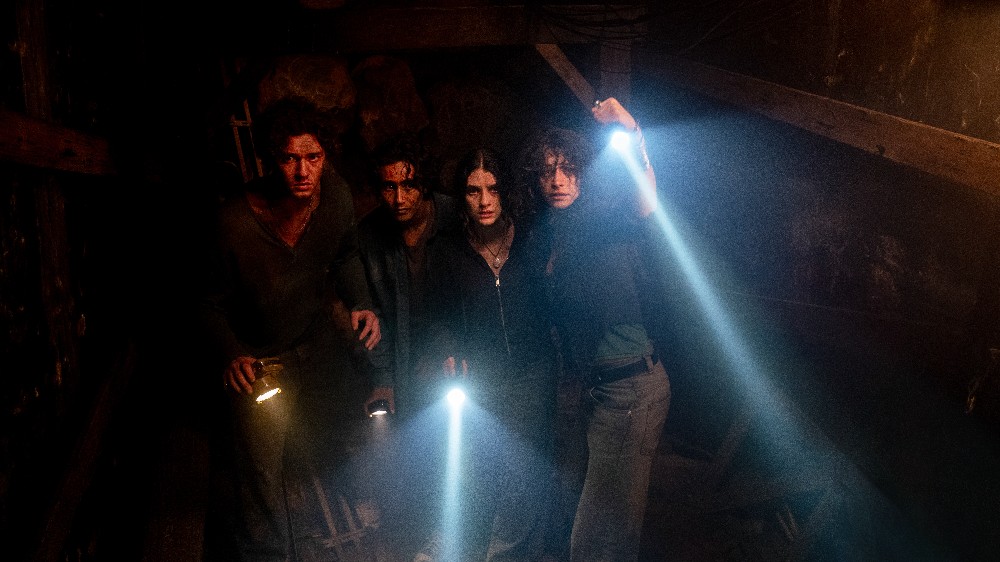Sandberg & Dauberman: The New Masters of Modern Horror?
The horror genre is experiencing a renaissance, fueled by a wave of innovative filmmakers pushing boundaries and challenging conventions. Among the rising stars, two names consistently top the list: James Wan's proteges, David F. Sandberg and Gary Dauberman. Their distinct styles, while sharing some common threads, have captivated audiences and critics alike, solidifying their positions as significant figures in contemporary horror. But are they truly the new masters of the genre? Let's delve into their filmographies and assess their impact.
Sandberg: The Master of Atmospheric Dread
David F. Sandberg burst onto the scene with his short film Lights Out, which went viral and quickly transitioned into a successful feature film. His strength lies in crafting intensely atmospheric horror that relies less on jump scares and more on creeping dread and psychological tension. His films are masterclasses in building suspense, utilizing clever sound design, shadowy cinematography, and a keen understanding of human fear.
- Key Characteristics of Sandberg's Style:
- Masterful use of darkness and shadows: He uses darkness not just as an aesthetic choice, but as a character in itself, representing the unknown and the lurking threat.
- Focus on psychological horror: His films explore the anxieties and fears of his characters, making the horror relatable and deeply unsettling.
- Simple, yet effective premises: He often starts with a relatively simple concept, building the tension and complexity throughout the narrative.
His subsequent works, including Annabelle: Creation and Shazam!, showcase his ability to navigate different subgenres within the horror spectrum, proving his versatility as a filmmaker. While Shazam! leans more towards superhero fare, it retains the core elements of suspense and character-driven storytelling that define his horror work.
Dauberman: The Architect of Frights
Gary Dauberman, on the other hand, is less focused on atmospheric dread and more on delivering visceral thrills and jump scares. While his approach might seem more traditional, his masterful understanding of horror tropes and his ability to craft genuinely frightening moments make him a force to be reckoned with. He's not just a director; he's also a prolific screenwriter, responsible for several successful horror films, including the IT movies and Annabelle Comes Home.
- Key Characteristics of Dauberman's Style:
- Expert use of jump scares: While often criticized, Dauberman's jump scares are carefully integrated into the narrative, adding to the overall tension rather than feeling cheap or gratuitous.
- Strong character arcs: Even within the confines of a horror film, he creates compelling characters with relatable motivations, adding emotional depth to the scares.
- Exploration of classic horror themes: His films tap into established horror tropes, such as demonic possession and childhood trauma, giving them a familiar yet refreshing twist.
His contributions to the Conjuring universe solidify his position as a key player in the modern horror landscape. His ability to blend nostalgia with modern filmmaking techniques has garnered a large and devoted fan base.
The Legacy of Wan: A Shared Foundation
Both Sandberg and Dauberman honed their skills under the mentorship of James Wan, the acclaimed director behind Saw, The Conjuring, and Insidious. Wan's influence is evident in their work, particularly in their attention to detail, their masterful use of sound and visuals, and their ability to blend scares with emotional depth. This shared lineage contributes to their success and positions them as inheritors of a powerful horror legacy.
Are They the New Masters?
While declaring them definitively as "masters" is subjective and invites debate, Sandberg and Dauberman have undoubtedly established themselves as leading figures in modern horror. Their distinct styles, combined with their undeniable talent and successful track records, position them as key players shaping the future of the genre. Their films continue to resonate with audiences, demonstrating their ability to tap into primal fears and deliver truly terrifying cinematic experiences. The future of horror looks bright, thanks to these two rising stars.
What are your thoughts? Who do you consider the most influential horror filmmakers working today? Share your opinions in the comments below!

